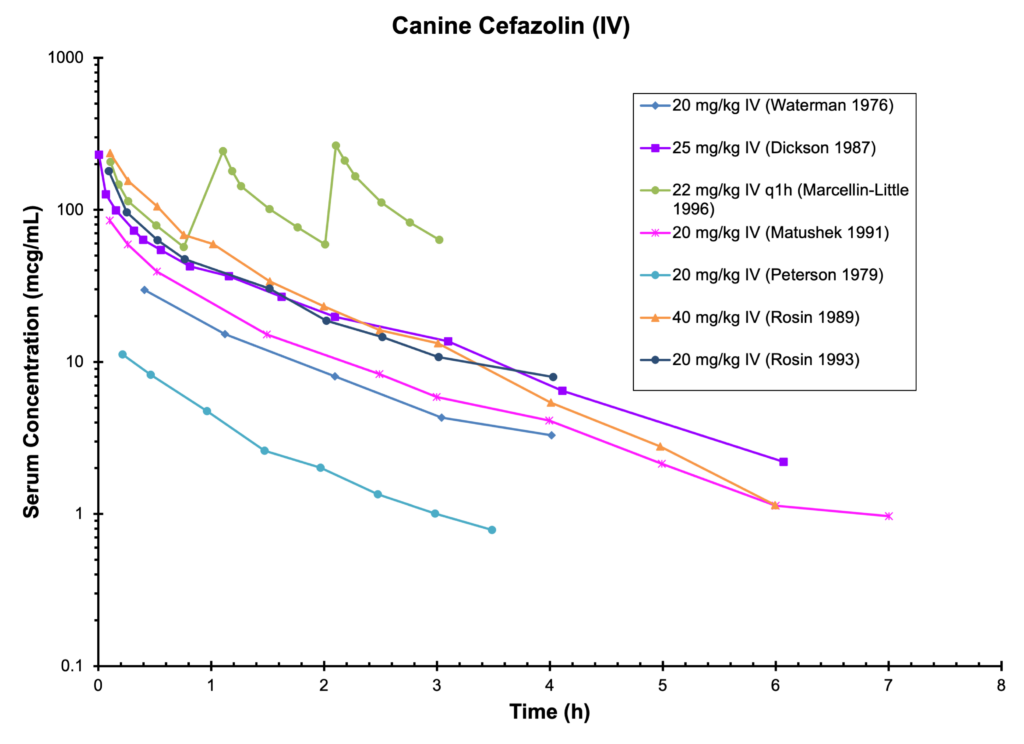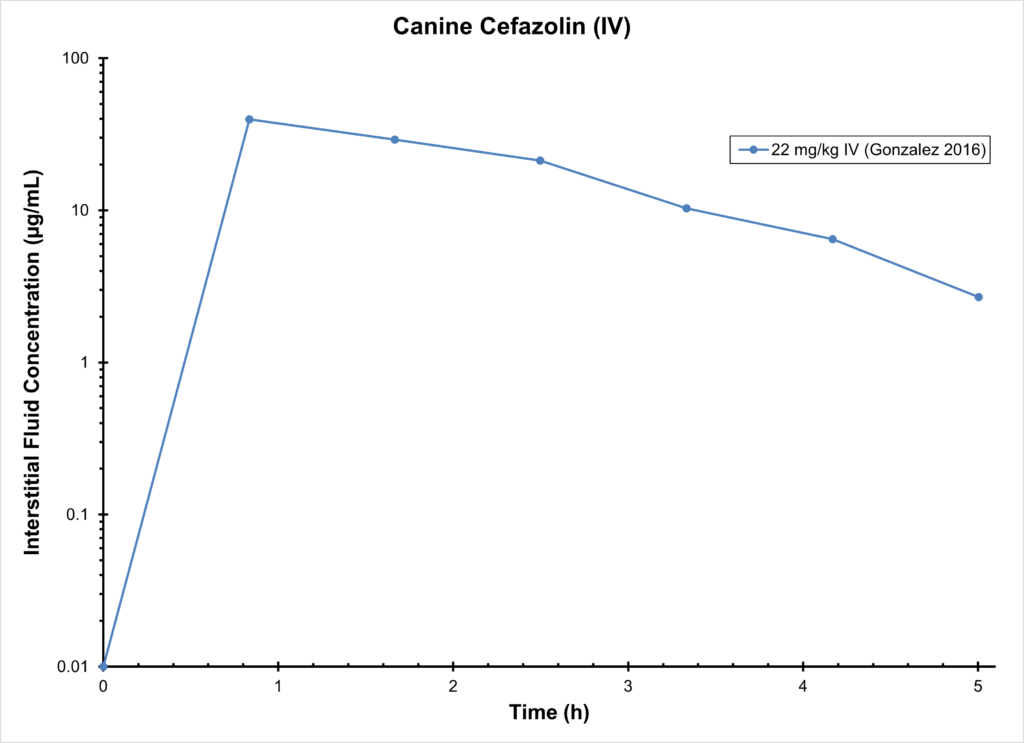Waterman, N. G., Raff, M. J., Scharfenberger, L., & Barnwell, P. A. (1976). Protein binding and concentrations of cephaloridine and cefazolin in serum and interstitial fluid of dogs. The Journal of Infectious Diseases, 133(6), 642–647. https://doi.org/10.1093/infdis/133.6.642
Dickson, P. L., DiPiro, J. T., Michael, K. A., Cheung, R. P., & Hall, E. M. (1987). Effect of hemorrhagic shock on cefazolin and gentamicin pharmacokinetics in dogs. Antimicrobial Agents and Chemotherapy, 31(3), 389–392. https://doi.org/10.1128/AAC.31.3.389
Marcellin-Little, D. J., Papich, M. G., Richardson, D. C., & DeYoung, D. J. (1996). Pharmacokinetic model for cefazolin distribution during total hip arthroplasty in dogs. American Journal of Veterinary Research, 57(5), 720–723.
Matushek, K. J., & Rosin, E. (1991). Pharmacokinetics of cefazolin applied topically to the surgical wound. Archives of Surgery (Chicago, Ill.: 1960), 126(7), 890–893. https://doi.org/10.1001/archsurg.1991.01410310100015
Peterson, L. R., Gerding, D. N., McLinn, D., & Hall, W. H. (1979). Prediction of peak penicillin and cephalosporin concentrations in canine serum as derived from in vitro serum and tissue quantitative protein binding. The Journal of Antimicrobial Chemotherapy, 5(2), 219–227. https://doi.org/10.1093/jac/5.2.219
Rosin, E., Ebert, S., Uphoff, T. S., Evans, M. H., & Schultz-Darken, N. J. (1989). Penetration of antibiotics into the surgical wound in a canine model. Antimicrobial Agents and Chemotherapy, 33(5), 700–704. https://doi.org/10.1128/AAC.33.5.700
Rosin, E., Uphoff, T. S., Schultz-Darken, N. J., & Collins, M. T. (1993). Cefazolin antibacterial activity and concentrations in serum and the surgical wound in dogs. American Journal of Veterinary Research, 54(8), 1317–1321.


